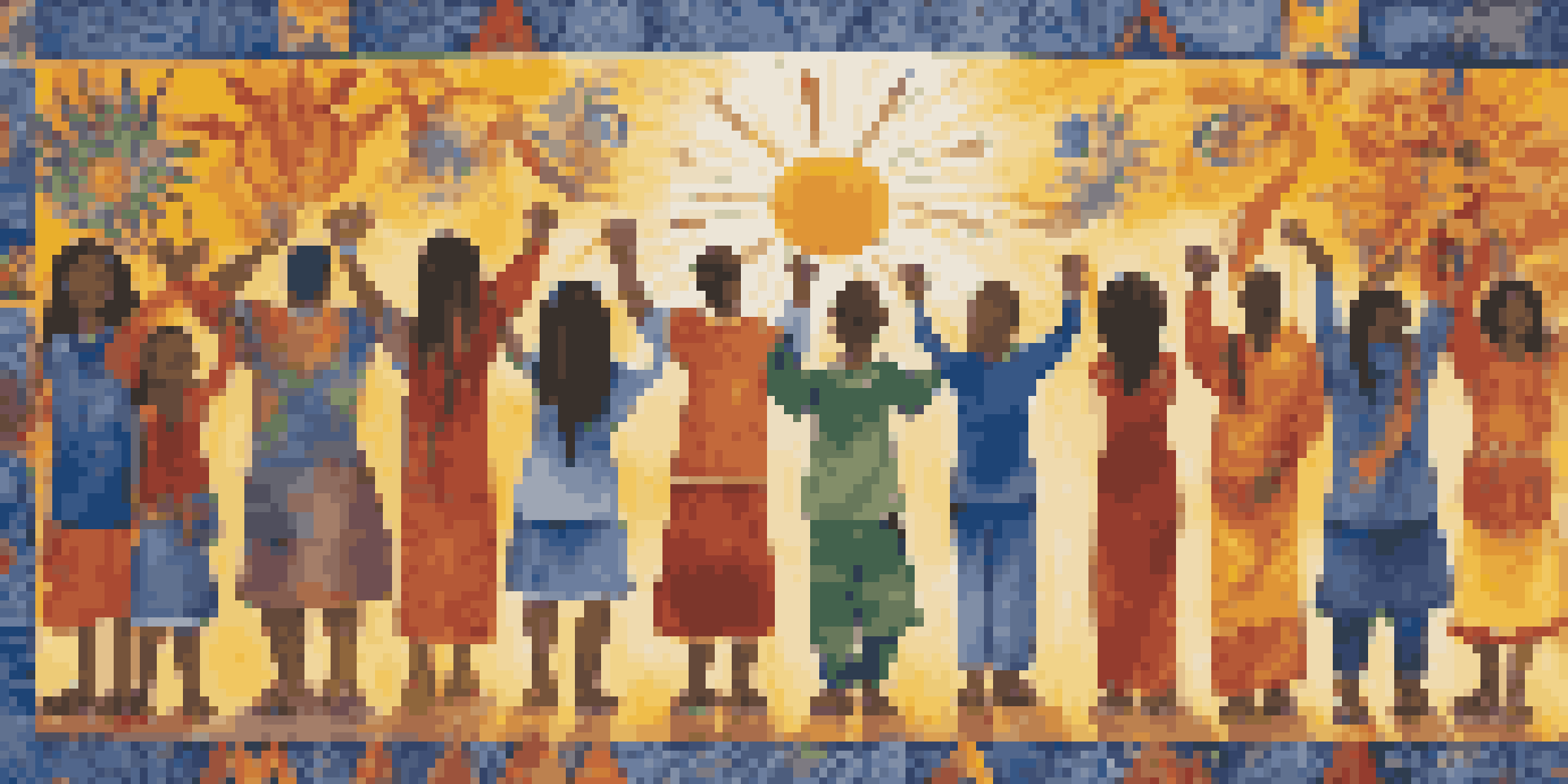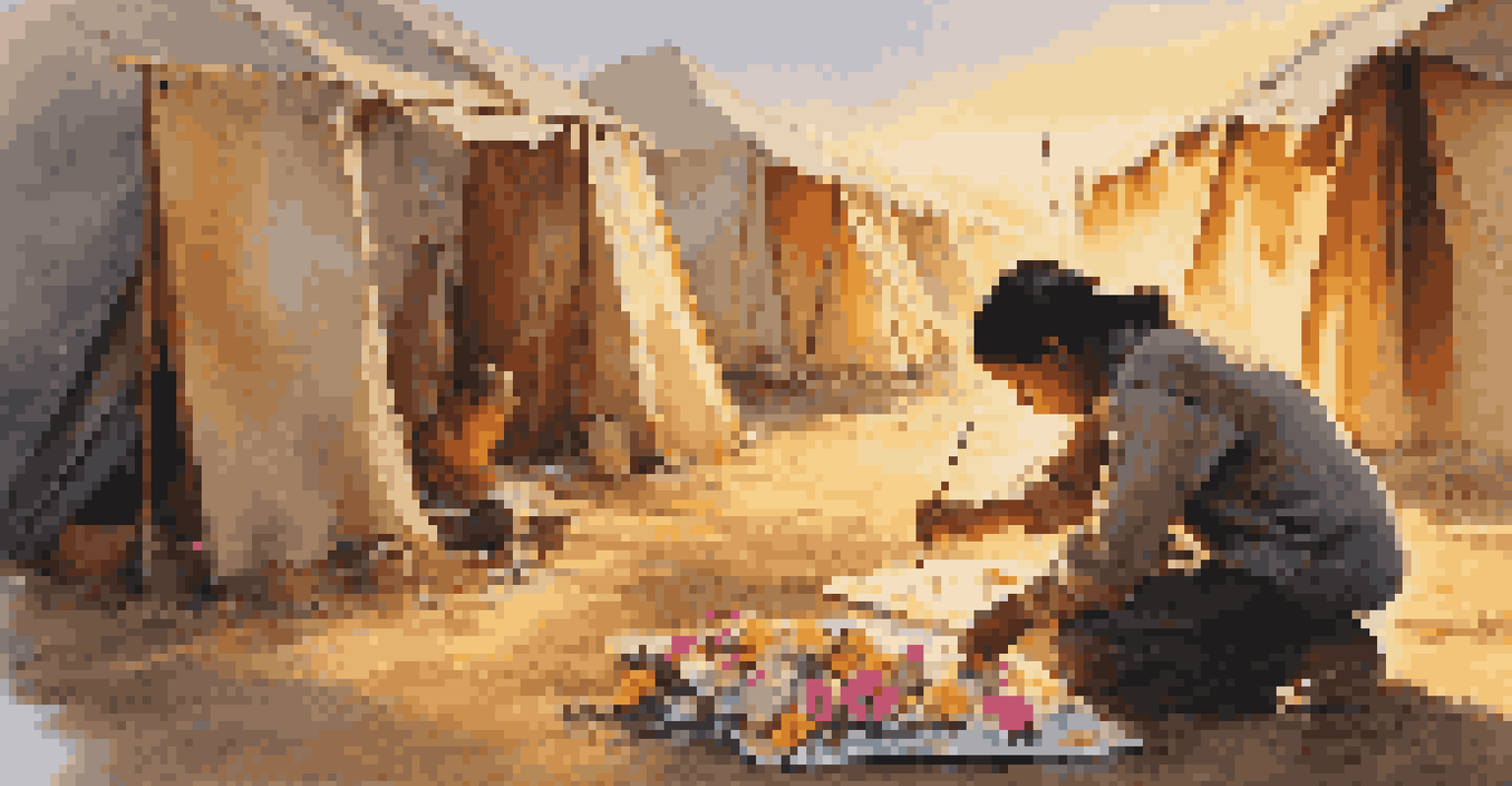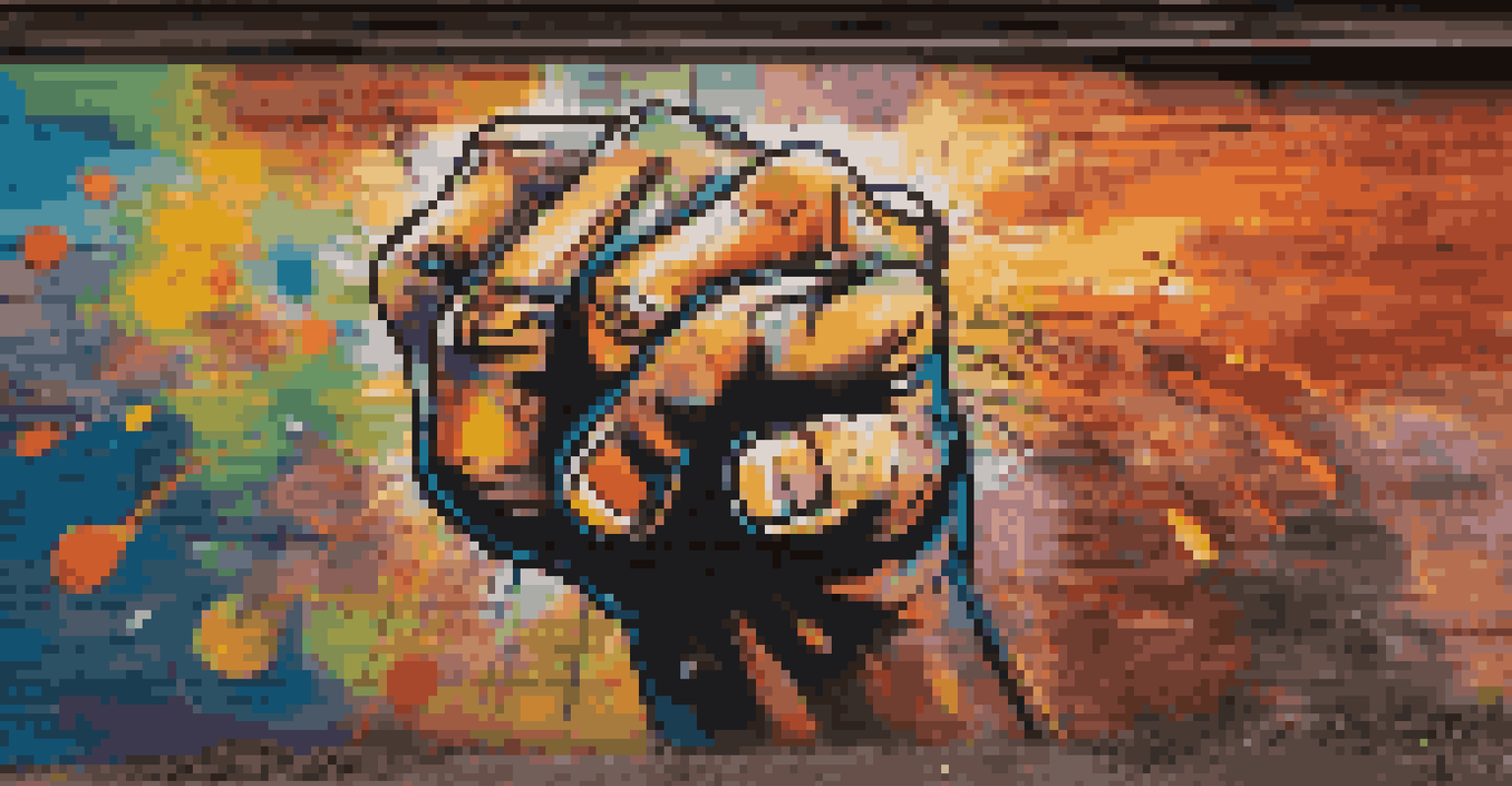Art as Resistance: The Power of Expression in Adversity

Understanding Art as a Form of Resistance
Art has long been a means of expression, but when faced with adversity, it transforms into a powerful tool for resistance. Artists use their work to challenge oppressive systems and convey messages that resonate with those who suffer. This form of expression can take many shapes, from visual art and music to poetry and performance, each serving as a voice for the voiceless.
Art is the most beautiful of all lies.
Consider the murals that adorn city walls during protests; they are not merely decorative but serve as powerful symbols of defiance. These artworks often tell stories of struggle and hope, reminding viewers of the shared human experience in the face of adversity. By creating art in such contexts, artists not only document history but also inspire action and solidarity among communities.
Ultimately, art as resistance is about reclaiming narratives and empowering individuals. It encourages dialogue and reflection, challenging the status quo while fostering a sense of belonging and unity among those who face similar struggles. Through creativity, artists pave the way for change, proving that expression can be a formidable force against oppression.
Historical Examples of Art as Resistance
Throughout history, art has played a crucial role in resistance movements. Take the Harlem Renaissance, for example, where African American artists, musicians, and writers used their craft to challenge racial injustice and celebrate their cultural heritage. The vibrant expressions during this period not only uplifted communities but also laid the groundwork for future civil rights activism.

Another poignant instance is the works of Pablo Picasso, especially his painting 'Guernica.' Created in response to the horrors of the Spanish Civil War, the artwork conveys the chaos and suffering inflicted upon innocent civilians. This piece not only serves as a powerful anti-war statement but also illustrates how art can capture the emotional weight of political strife, urging viewers to reflect on the consequences of conflict.
Art as Resistance Empowers Voices
Art transforms into a powerful tool for resistance, allowing individuals to express their struggles and challenge oppressive systems.
These historical examples remind us that art transcends time and space, resonating with people across generations. They show that artists have always found ways to express dissent and challenge dominant narratives, reinforcing the idea that creativity can foster resilience in the face of adversity.
Modern-Day Artists Leading the Charge
In today's world, numerous artists continue the tradition of using their work as a form of resistance. For instance, street artists like Banksy challenge societal norms and highlight issues such as poverty, war, and environmental degradation through their thought-provoking murals. These pieces often spark conversations and encourage viewers to think critically about the world around them.
The role of the artist is to ask questions, not to answer them.
Similarly, musicians like Billie Eilish use their platform to address mental health issues, climate change, and social injustice. Through their lyrics and performances, they connect with younger audiences, bringing attention to pressing issues that might otherwise go unnoticed. This ability to resonate with the public is a testament to the power of art in advocating for change.
These modern-day artists illustrate that art remains an essential form of resistance, adapting to contemporary challenges while continuing to inspire action. Their work serves as a reminder that creativity is not just a personal expression but also a collective call for justice and change.
The Role of Community in Artistic Resistance
Art as resistance thrives in community settings, where individuals come together to share experiences and support one another. Community art projects often emerge in response to local struggles, fostering a sense of belonging and collaboration. By creating art together, participants can express their shared emotions and experiences, amplifying their voices in the process.
For example, community murals are often created in collaboration with local residents, reflecting their hopes, dreams, and struggles. These artworks not only beautify public spaces but also serve as powerful statements of resilience and solidarity. They remind us that art can bridge divides, bringing people together in pursuit of a common goal.
Community Art Fosters Solidarity
Community-based art initiatives encourage collaboration and dialogue, amplifying collective voices against oppression.
Moreover, community-based art initiatives encourage dialogue and understanding among diverse groups. By engaging in artistic expression, individuals can confront their differences and find common ground, ultimately strengthening their collective voice against oppression. This collaborative spirit is a vital component of art as resistance.
The Emotional Impact of Art in Times of Struggle
Art has a unique ability to evoke emotions and foster healing, especially during difficult times. For those experiencing trauma or adversity, creating or engaging with art can be a cathartic experience. It allows individuals to process their feelings and articulate their struggles in a meaningful way, providing a sense of release and relief.
Consider the therapeutic use of art in refugee camps, where displaced individuals use creative expression to cope with their experiences. Engaging in art-making helps to restore a sense of agency and normalcy, allowing individuals to reclaim their narratives amidst chaos. This highlights how art can serve as a form of resistance not only against external oppression but also against internal struggles.
Ultimately, the emotional impact of art is profound. It serves as a reminder that even in the darkest times, creativity can flourish, providing hope and resilience. By channeling pain into artistic expression, individuals can forge a path toward healing and empowerment.
Challenges Faced by Artists as Agents of Change
Despite the power of art as resistance, artists often face significant challenges in their pursuit of change. Censorship remains a prevalent issue, with governments and institutions attempting to silence dissenting voices through restrictions on artistic expression. This suppression not only stifles creativity but also undermines the vital role of art in advocating for social justice.
Additionally, artists may encounter backlash from those who oppose their messages, leading to threats, harassment, or even violence. For instance, many political artists have faced repercussions for their work, forcing them to navigate a precarious landscape where their safety and freedom are at stake. This highlights the risks artists take in their commitment to using their craft for resistance.
Digital Platforms Expand Reach
The rise of digital platforms provides artists with unprecedented opportunities to share their work and engage with global audiences.
Nevertheless, these challenges underscore the importance of supporting artists as agents of change. By uplifting their voices and advocating for their right to express themselves freely, we empower them to continue their vital work. Recognizing the hurdles they face can inspire action within communities to protect and promote artistic expression as a means of resistance.
The Future of Art as Resistance
Looking ahead, the future of art as resistance remains bright and full of potential. With the rise of digital platforms, artists now have unprecedented opportunities to share their work with global audiences. This accessibility allows for greater collaboration and dissemination of ideas, fostering an environment where artistic expression can thrive in the face of adversity.
Moreover, as social movements continue to gain momentum, artists are finding new ways to engage with pressing issues, from climate change to systemic inequality. These creative responses not only raise awareness but also mobilize communities to take action, demonstrating that art can be a catalyst for change in the modern world.

As we embrace the future of art as resistance, it is essential to support and amplify the voices of those who challenge the status quo. By recognizing the power of artistic expression to inspire, connect, and heal, we can collectively work toward a more just and equitable society, where creativity serves as a beacon of hope amid adversity.